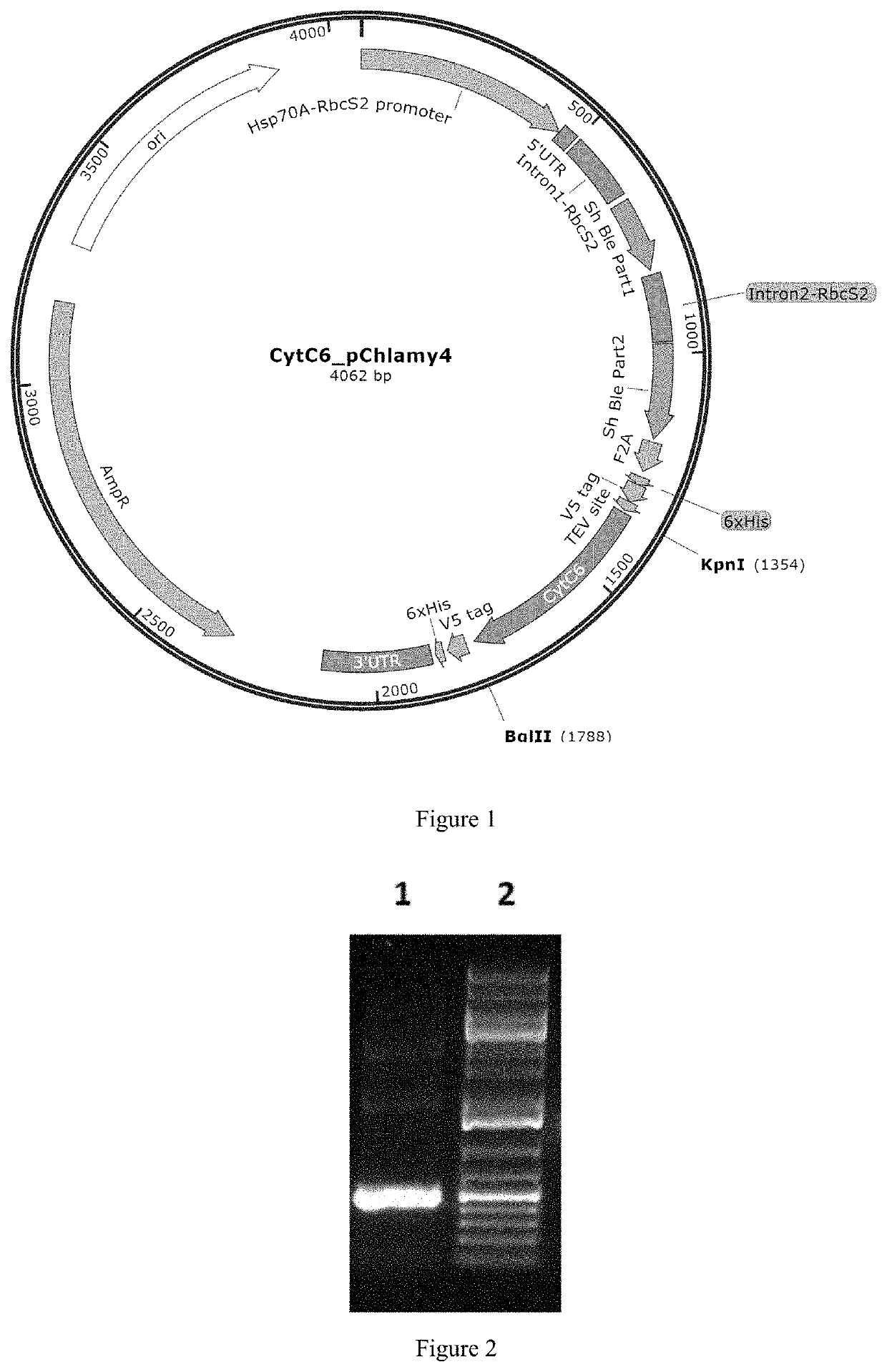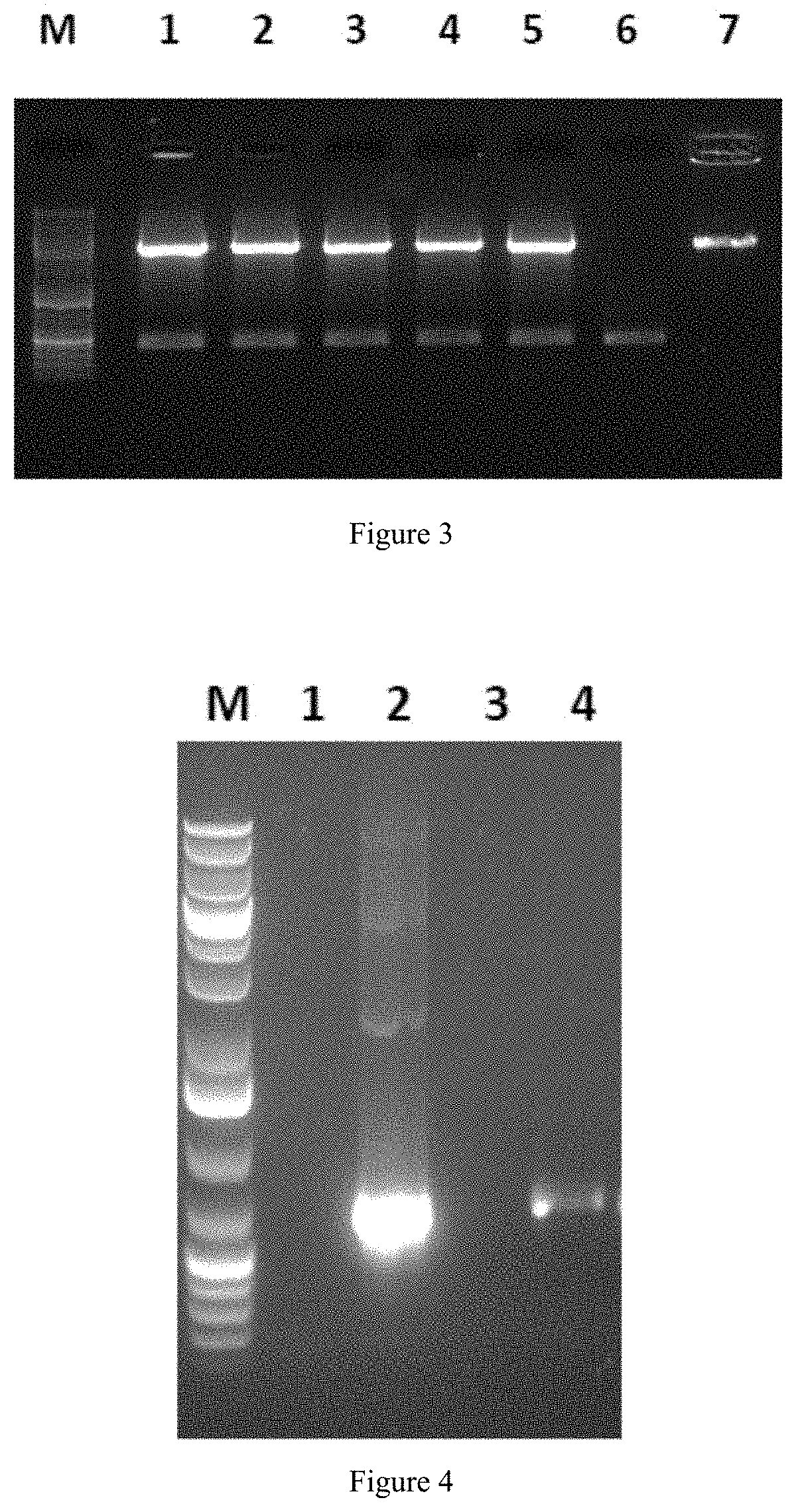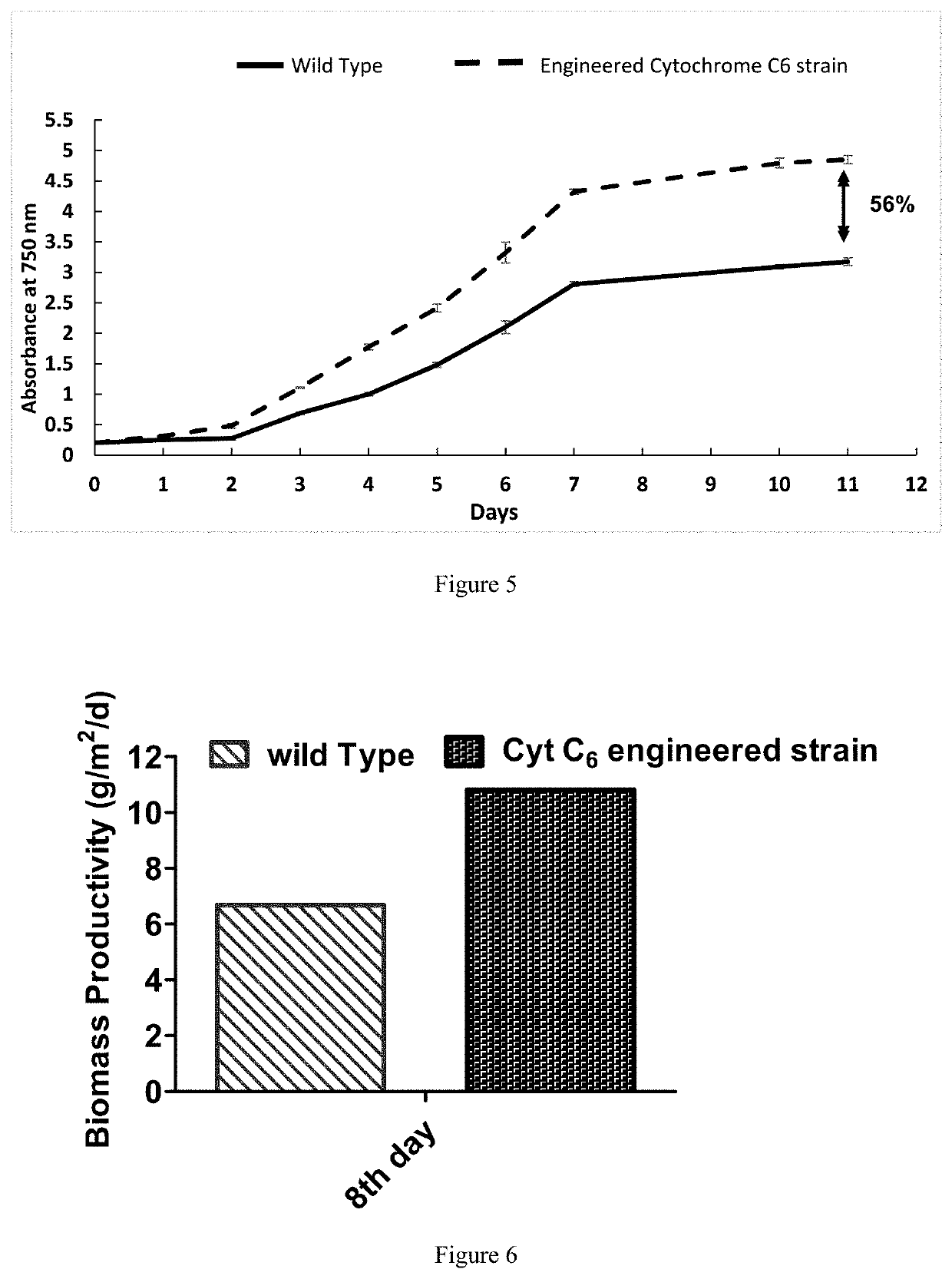Genetically modified alga, sequences and methods thereof
- Summary
- Abstract
- Description
- Claims
- Application Information
AI Technical Summary
Benefits of technology
Problems solved by technology
Method used
Image
Examples
example 5
t of Photosynthetic Efficiency
[0207]Photosynthetic efficiency was calculated based on the following equations:
% Photosynthetic efficiency=Energy output from biomass÷Energy input from white LED light×100
Step 1—
[0208]
Calculation of Energy output from biomass=Aerial productivity (g / m2 / d)×Standard enthalpy of biomass combustion(=22.5 kJ / g)
[0209]Table 1 provides for calculation of Aerial productivity of wild type and cytochrome c6 engineered strain (recombinant algae of the present disclosure).
TABLE 1Wild type strainCytochrome c6 engineered strain1.From ash free dry weight based biomass1.From ash free dry weight based biomassestimation for Cholrella sorokinianaestimation for Cholrella sorokinianastrain. It was found, 1 OD = 250 mg / Lstrain. It was found, 1 OD = 250 mg / LFor fed batch productivity calculations,For fed batch productivity calculations,difference in biomass was taken between 8thdifference in biomass was taken between 8thday of growth and 4th day of growth. 4th dayday of growth...
example 6
t of Photosynthetic Performance
[0221]Photosynthetic performance was assessed by studying the chlorophyll ‘a’ fluorescence parameters, which were monitored using a pulse amplitude modulated fluorimeter (Dual-Pam-100, Heinz Walz, Effeltrich, Germany). For all the measurements, cells were kept in darkness for 10 min before fluorescence analysis. The sample illumination with a red measuring beam (at 655 nm) to determine minimal fluorescence (F0) was performed using a measuring light (0.24 μmol photons m−2 s−1). A 400 ms saturation pulse (10000 μmol photons m−2 s−1) was used to determine the maximal fluorescence yield (Fm). Dark adapted values for Fm and Fo were measured on cells placed in darkness minimum for 10 min so as to obtain maximal quantum yield of PSII, Fv / Fm, Fv=Fm−Fo, (Krause & Weis 1991). Induction kinetics were performed using red actinic light (1000 μmol photons m−2 s−1). The quantum yields of photochemical quenching, Y(II) and closure of PSII reaction centres (1−qP) were ...
PUM
| Property | Measurement | Unit |
|---|---|---|
| Temperature | aaaaa | aaaaa |
| Temperature | aaaaa | aaaaa |
| Fraction | aaaaa | aaaaa |
Abstract
Description
Claims
Application Information
 Login to View More
Login to View More - R&D
- Intellectual Property
- Life Sciences
- Materials
- Tech Scout
- Unparalleled Data Quality
- Higher Quality Content
- 60% Fewer Hallucinations
Browse by: Latest US Patents, China's latest patents, Technical Efficacy Thesaurus, Application Domain, Technology Topic, Popular Technical Reports.
© 2025 PatSnap. All rights reserved.Legal|Privacy policy|Modern Slavery Act Transparency Statement|Sitemap|About US| Contact US: help@patsnap.com



